In this article we will see How to BUILD CHORDS on Guitar, why they adopt their different names, and what notes each one is made up of.
Each note, degree, or chord has its particular name, depending on its position within the seven notes that make up a major scale. If we start with the first note it would be: Tonic, Supertonic, Mediant, Subdominant, Dominant, Submediant, and Leading Tone.
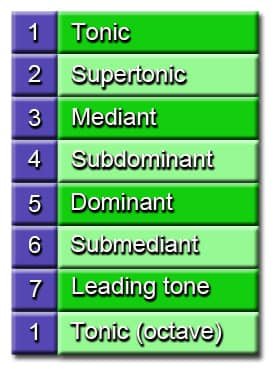
These names are very easy to remember, if we know the functions of each note depending on its position within the scale.
These grades are also often simplified by naming them by numbers. Therefore, the tonic would be the first degree, note or chord. The supertonic is the second degree or second note of the scale, and so on until reaching the seventh or leading tone, precisely the seventh and last degree of the scale.
- The Tonic or first degree: it would be the main note or base from which the key of the scale comes. The Octave would again be the repeated tonic, but an octave higher than the previous tonic note.
- The Dominant or fifth degree: this is the most consonant note within the major scale after the tonic.
- The Mediant or third degree, is the note that is between the tonic and dominant. Hence the Mediant name.
With these three notes we can now build all kinds of major chords, depending on each scale or key.
How to Build Chords of Fifth
Take the A major scale as an example. We have the Tonic which would be A, and the Dominant or fifth degree E. As I already said, the note with the greatest consonance of all those that make up a major scale, after the tonic. Well, with these two notes we can form fifth chords (5), widely used on electric guitar, also known as power chords.

These chords are among the simplest and most well-known, widely used with distorted sounds, given their stability or linearity in the sound. But due to their lack of movement, there are no distinctions between minor and major chords.
How to Build Major Chords
To give movement to the chord, the note that is between the tonic and the dominant, the third or mediant, is added. This note clearly defines the quality of a major chord (M).
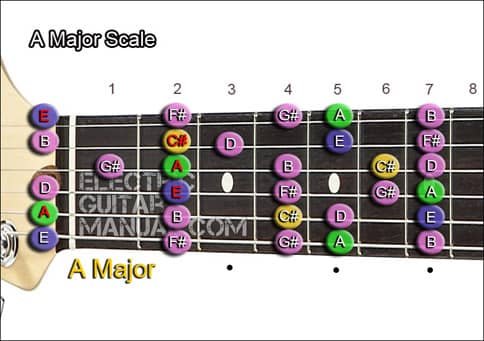
How to Build minor Chords on Guitar
If we modify the third note of a major chord only one semitone (one fret), we can obtain minor or suspended fourth chords.
For example, if we lower the third note a semitone, and turn it into a flat third, the chord goes from major to minor (m).
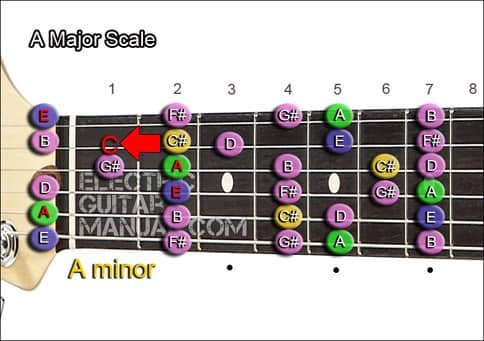
Suspended Fourth Chords
If instead of lowering the third note of the major chord, we it a highest semitone, the note would go from being a third to being a fourth. And the chord would become a suspended fourth chord (sus4).
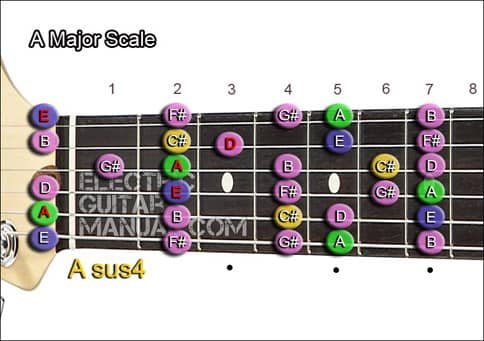
These chords offer us a bright, slightly tense, but pleasant tone.
How to Build minor 7 Chords on Guitar
Next we have the chords that are built not only by modifying the third note, but also by adding new notes to FORM another type of CHORDS on the Guitar.
Like minor seventh chords, which are constructed by adding the flat seventh to the minor chord in question.
Let’s go back to the example of A major and its scale. We lower the third a semitone, and it becomes A minor. Then we add the flat seventh to the chord, which would be G, and we would have an A minor Seventh chord (m7). Composed of four different notes, instead of three like the major, minor or suspended fourth chord.

This chord is one of the most used, and has a very characteristic and pleasant sweet sound.
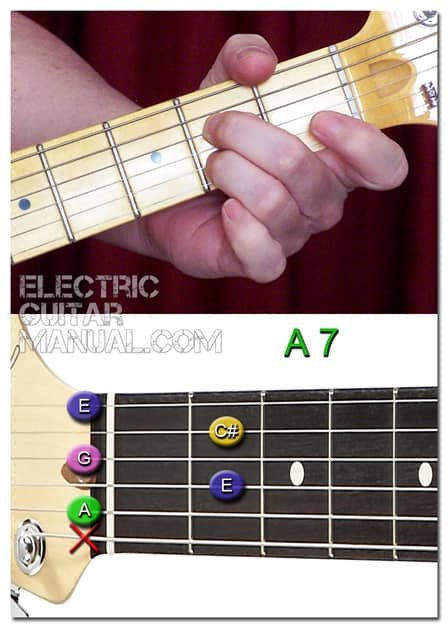
Seventh Chords (7)
Another widely used chord is the seventh chord (7). Widely used to replace major chords, to obtain a different tone and resonance. These chords are made up of the same notes as a major chord, but adding a flat seventh.
Its sound is tense, and widely used in the fifth degree of the major scale.
Major Seventh Chords (M7)
The Major Seventh chord (M7) is also made up of the same notes as the major chord, but adding a seventh. This type of chord has a warmer sound than the seventh chord, but at the same time colorful.
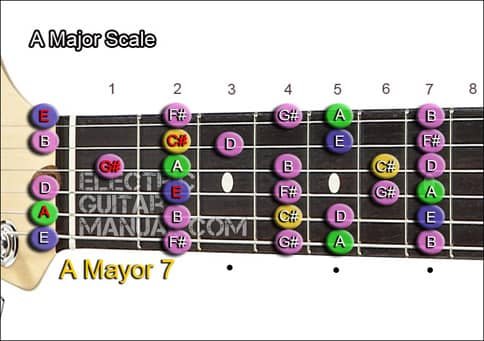
7sus4 Guitar Chord
To build a seventh suspended fourth chord (7sus4), we will use the same notes of a suspended fourth chord, and we will also add a flat seventh. Its sound is colorful, and with a lot of movement when gently strumming the strings.
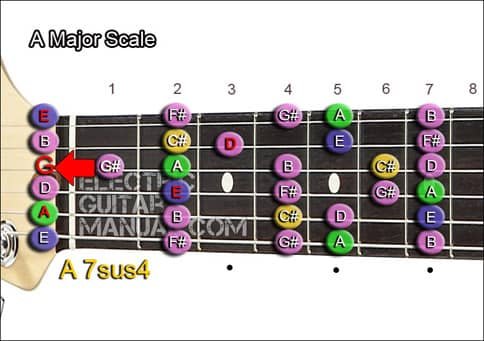
This would be the construction of the most basic chords, but when it comes to chord construction there are no limits.
If we play in a specific scale or key, we can construct random chords within that scale, and surely that invented chord has its own particular name, no matter how strange it may be. Augmented, diminished, sixth, ninth, eleventh, thirteenth, diminished fifth etc, etc, etc…
A chord is nothing more than a sequence of notes within a scale, so you can arrange those notes however you like. The possibilities are endless.
COMPLETE CHORD DICTIONARY with Three Different Positions for each Chord, and with the Notes of which they are Made Up.
